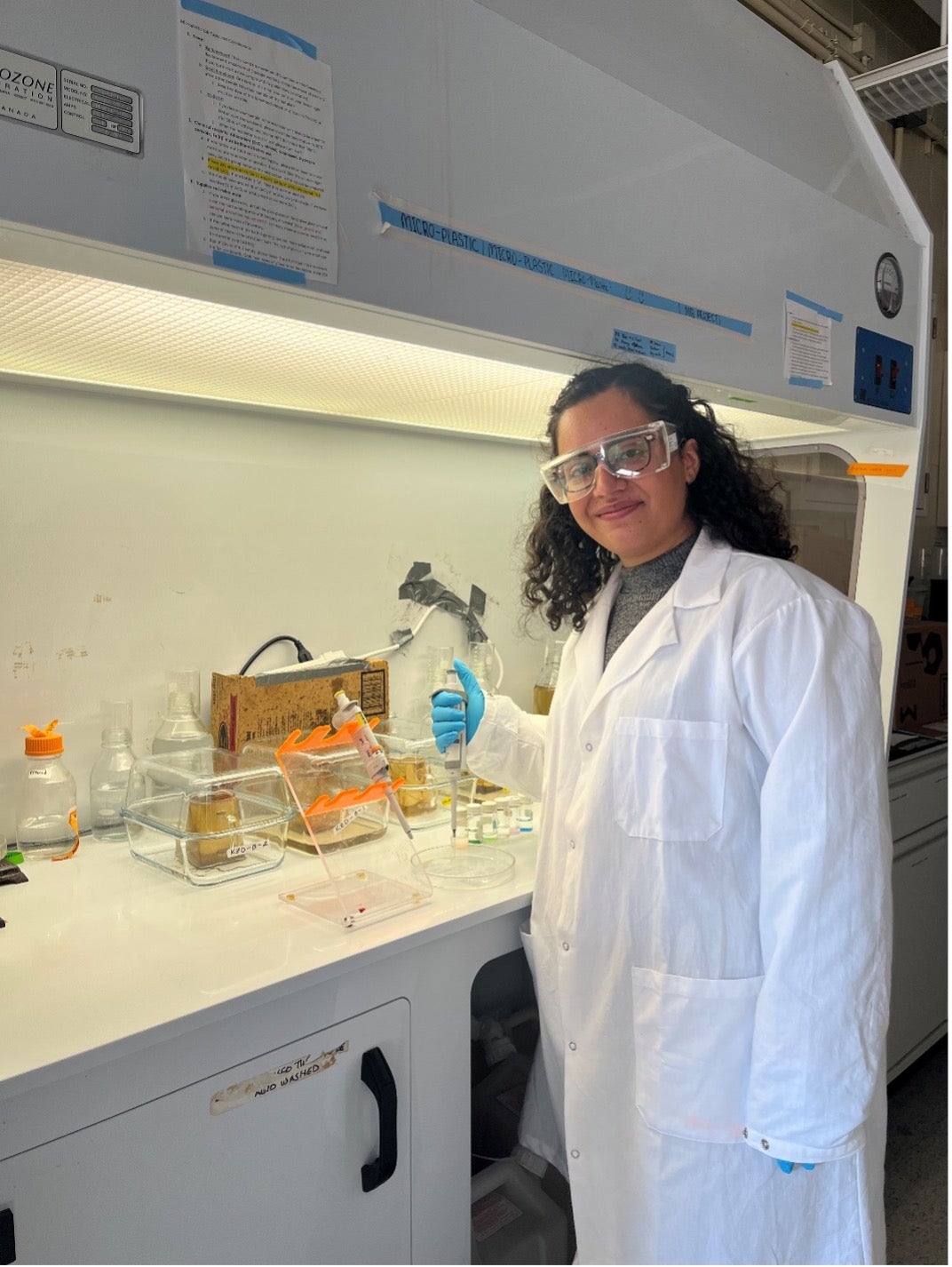
Asal Jaberansari is a research associate within the Ecohydrology research group at the University of Waterloo. This lab is supervised by Dr. Phillip Van Cappellen who is the Principal Investigator on the Microplastic Fingerprinting project.
The Microplastics Fingerprinting project team consists of over 25 faculty members, masters and PhD students, and support staff from various disciplinary backgrounds. We recognize this diversity as a strength that enables an interdisciplinary and holistic evaluation of the challenges and solutions associated with microplastics. Each issue of our newsletter will feature one of the project’s excellent researchers.
Asal is currently working on her Bachelor of Science degree in Biochemistry at the University of Waterloo. Her interest in biology and chemistry began in high school. Biochemistry seemed like the ideal path because it combined both of her favourite subjects and would give her a better understanding of how biological molecules give rise to the processes that occur in living organisms. Her first laboratory course at the university, where she conducted lab experiments and developed various methods, helped her decide to follow a career in research. Since then, she has sought out opportunities to work as a research associate for projects with a focus on chemistry, biology or biogeochemistry.
Currently, Asal is working on developing a method for environmental sample analysis using Laser direct infrared imaging (LDIR) spectroscopy. LDIR is a novel analytical tool that is able to image and map the population of microplastic particles within the sample to generate essential data such as size and polymer type. This information can help us predict the fate and transport of microplastics in the environment. Asal is also working on developing a fibre and fragment standard for the quantification of microplastics within real samples. When looking at microplastic content within the samples, standards are used to better and more accurately estimate the quantity of microplastics. The fibre and fragment standard will be used by the project team to obtain a more accurate value for the amount of plastic fibre and fragment present within various environmental samples. Finally, Asal is also working to analyze the plastic content of flushable wipes.